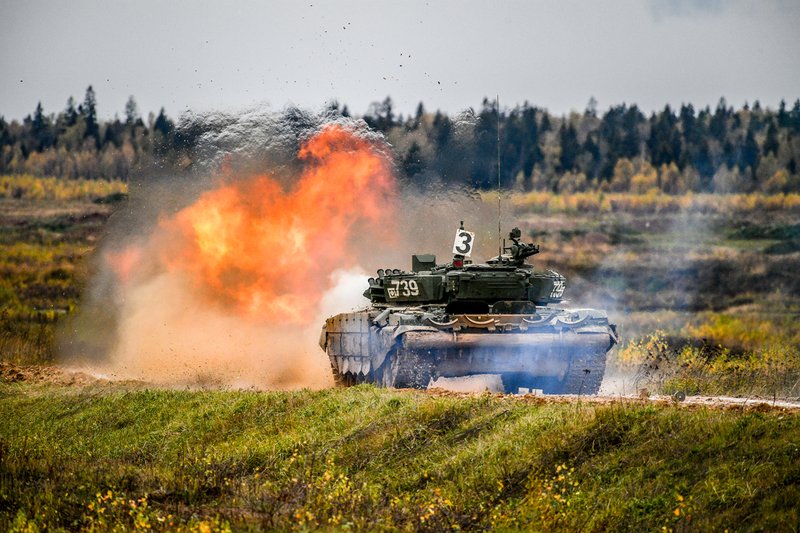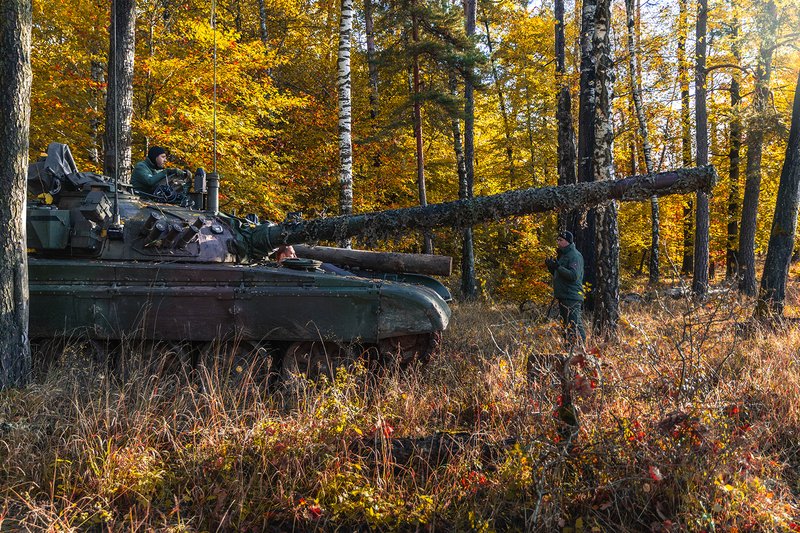Studying the opposition – how US Army trainers are learning from Russian tactics
The US Army’s Training and Doctrine Command (TRADOC) has just released a new ‘Army Techniques’ publication focused on Russian military tactics. The February 2024 study was released at the command’s recent annual Worldwide Opposing Force Conference.
According to service representatives, the new publication helps address the challenges the US faces against what they describe as ‘the acute Russian threat’... Continues below
Newsletter Sponsor:

Above: Russian tanks carry out summer training. The US Army’s recent study analyses tactics and doctrine to better understand the potential threat. (Photo: Russian MoD)
The publication, known as ATP 7-100.1, describes Russian tactics for use in US Army training, professional education and leader development. It is part of a broader series that addresses a nation state’s military doctrine, with a focus on ground forces and tactical operations in offence, defence and related mission sets.
Other key topics covered in the latest publication include task organisation, capabilities and limitations related to military mission and support functions.
‘[Threat doctrine] starts with the enemy,’ said Gen Gary Brito, TRADOC commanding general. ‘Paragraph one is paragraph one for a reason. Understanding the threat enables a lot of things — how we operate everywhere from the individual level up to the collective level, how our army as a big enterprise may modernise, how we see the threat both in the near term and the far term and educating [soldiers] at every echelon on the threat.’

MVRsimulation’s VRSG: bringing military simulation training to life.
ATP 7-100.1 is designed as a foundation for understanding how Russian ground forces think and act in tactical operations: ‘This publication presents multiple examples of functional tactics in dynamic operational environment conditions. The tactics in this ATP are descriptive and provide an orientation to tactics gathered from Russian doctrine, translated literature and observations from recent historical events.’
Wisely, the document caveats its implications regarding recent events: ‘This ATP is not meant to represent how the Russians are currently fighting in Ukraine. Many insights and observations can be collected daily to either affirm or refute Russian doctrinal strategies and tactics, but it’s far too early to acknowledge any definitive changes in doctrine.’
As an example, the authors note: ‘With so many Russian units now in Ukraine, it will take some time to determine a new laydown of forces if that becomes necessary. Furthermore, with the losses Russia has suffered, it is too early to assess the structure and equipping of any Russian unit for the next five to ten years.’
The first main part of the document, entitled ‘Russian Fundamentals’, sets the context for tactical actions of the Ground Forces of the Russian Federation, or ‘SV’. The section includes chapters on a strategic overview of the Russian Federation as well as the Russian military and its role, plus the SV’s organisational structure.
Its strategic overview looks at ‘the fundamental conditions that contextualise the Russian Federation, its military, and its actions in an operational environment’, moving on to relations with the US and projecting Moscow’s approach to exploiting environmental conditions to gain a strategic advantage. It also details national capabilities that can support military operations, both during great power competition and open conflict.
The ATP builds on that background to cover ‘the historical background and basis of the Russian military’. It reviews military doctrine and thinking that directs the SV’s evolution. Of particular interest is a focus on the latest organisational restructuring of Russia’s security and armed forces, as well as national-level integration of those forces and how they accomplish strategic goals and objectives.
The second element of the document, ‘Tactical Actions’, includes chapters on Russian reconnaissance and security fundamentals, the doctrinal concept of fires and the Russian strike complex and the principles of Russian forces in both defence and offence.

Above: Deep knowledge of the likely opposing force is vital for realistic exercises and effective training. (Photo: US Army)
Those chapters are supported by 11 appendices, ranging from a description of the Russian fires complex and doctrinal capabilities and application of missile and artillery forces to how special forces are doctrinally organised with capabilities and integrated into combined arms national/strategic echelons.
While aspects such as special forces are included as an addendum, the ATP’s emphasis is clearly on Russian tactics in large-scale combat operations and the potential use of those forces in such operations.
Looking toward the future, the authors acknowledge that they are still studying the conflict in Ukraine and continuing to revise their assessments. As such, the ATP is ‘not the correct medium for publication of [the authors’] initial observations nor potential future changes for the Russian Army’. Instead, they say that information of that type will be available at TRADOC G2’s ‘Russia Landing Zone’ site.
As the US Army and its sister services emerge from another round of budget requests and continue to evolve their own strategies and doctrine, in part citing lessons learned from Ukraine, the influence of this analysis (and its promised follow-ups) on how the force fights (and trains to fight) in future could be significant.
Other articles in this newsletter:
Cold front – how Norway is sustaining vital combat training capabilities
Falling short – US DoD criticises Patriot missile training for Ukraine
Don't want to miss out on future Decisive Edge content? Make sure you are signed up to our email newsletters.











